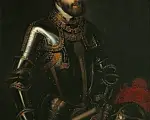
In today’s Claire Chat’s video I talk about the visit Charles V made to England in 1522, to make an alliance with Henry VIII against France, and all the pageantry and entertainment that he enjoyed.
[Read More...]
In today’s Claire Chat’s video I talk about the visit Charles V made to England in 1522, to make an alliance with Henry VIII against France, and all the pageantry and entertainment that he enjoyed.
[Read More...]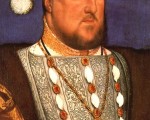
Henry VIII was born on 28 June 1491 at Greenwich Palace. He was the second son of Henry VII and Elizabeth of York, but became heir to the throne when his brother Arthur died in 1502. He inherited the throne on the death of his father in April 1509, when he was just 17 years old, and he was crowned on 24 June 1509 in a joint coronation with his new bride Catherine of Aragon, the widow of his brother.
His reign was seen as the start of a new era, after his father’s harsh regime, and Henry was very much a Renaissance prince at the start, with his charm, good looks, intelligence, love of sport and desire to fight bribery and corruption. However, he has gone down in history as a larger than life, hulk of a man who had six wives and who executed two of them, and who, according to one contemporary source, executed 72,000 during his reign. His reign is famous for the break with Rome which happened as a result of Henry VIII’s “Great Matter”, his quest for an annulment of his marriage to his first wife Catherine of Aragon. Catherine had been unable to provide Henry with a living son and Henry had come to view the marriage as contrary to God’s laws, since Catherine was his brother’s widow. He had also fallen in love with Anne Boleyn. The Pope refused to grant Henry an annulment, but Henry took matters into his own hands after reading that kings and princes were only answerable to God. The marriage was annulled in 1533, Henry VIII married Anne Boleyn and the Reformation Parliament of 1529-1536 passed the main pieces of legislation which led to the break with Rome and the English Reformation.
[Read More...]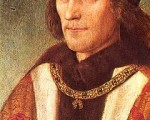
Henry VII, or Henry Tudor, was born on 28 January 1457 at Pembroke Castle and was the son of Edmund Tudor, 1st Earl of Richmond, and Margaret Beaufort. Henry’s paternal grandparents were Owen Tudor (a former page to Henry V) and Catherine of Valois, the widow of Henry V and mother of Henry VI. His maternal grandfather was John Beaufort, 1st Duke of Somerset, and his maternal great-grandfather (John Beaufort, 1st Earl of Somerset) was a son of John of Gaunt, 1st Duke of Lancaster, and his mistress (and later wife), Katherine Swynford. It was from this Beaufort side of the family that Henry VII derived his claim to the throne. Lady Margaret Beaufort was only thirteen years old when Henry was born and she was already a widow, his father having died from the plague three months earlier while imprisoned by Yorkists. Margaret had been taken in by her brother-in-law, Jasper Tudor, Earl of Pembroke, the man who helped bring Henry up, who took him into exile in Brittany and who helped him win the crown of England.
[Read More...]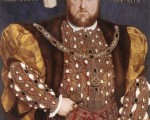
In today’s Claire Chats I look at whether Henry VIII was a tyrant and compare him to Machiavelli’s idea of what a monarch/leader should be.
[Read More...]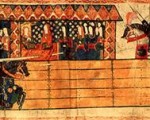
In today’s Claire Chats video I look at Henry VIII the jouster and the records that tell of how he excelled at the sport, and also accounts of his accidents.
[Read More...]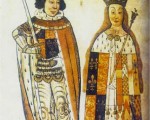
An article on Anne Neville, queen consort of Richard III and daughter of Richard Neville, 16th Earl of Warwick and a man known as “the Kingmaker”.
[Read More...]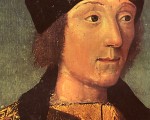
Henry VII was born at Pembroke Castle on the 28th January 1457. His parents were the thirteen year-old Lady Margaret Beaufort and her husband Edmund Tudor, 1st Earl of Richmond, who, unfortunately, had died of the plague three months before Henry’s birth.
[Read More...]
On 22 January 1552, between 8 and 9am, Edward Seymour, Duke of Somerset and former Lord Protector, was executed on Tower Hill.
[Read More...]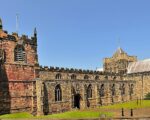
On this day in Tudor history, 14th March 1553, during the reign of King Edward VI, Arthur Bulkeley, Bishop of Bangor, died at his home in Bangor.
His final resting place? The quire of Bangor Cathedral.
But who was Bishop Bulkeley, and why does his legacy matter?
Arthur Bulkeley was a Welshman, born around 1495 in Beaumaris, Anglesey. He was a scholar, studying both canon and civil law at Oxford. But his path wasn’t just academic; he found himself serving some of the most powerful figures in Tudor England.
[Read More...]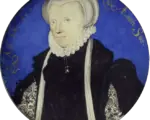
On this day in Tudor history, 19th February 1567, while imprisoned in the Tower of London, Lady Margaret Douglas, Countess of Lennox, received devastating news – her son, Henry Stuart, Lord Darnley, King of Scotland, had been brutally murdered at Kirk o’ Field in Edinburgh.
But this wasn’t just the loss of a son, it was the destruction of her dynastic ambitions, the shattering of her hopes for the future, and yet another chapter of heartbreak in Margaret’s turbulent life.
So, who was Margaret Douglas, why was she in the Tower, and what did this moment mean for her—and for the tangled web of Tudor and Stuart politics?
Margaret Douglas was no ordinary noblewoman, she was a granddaughter of Henry VII, and the daughter of Margaret Tudor (Henry VIII’s sister) and her second husband, Archibald Douglas, 6th Earl of Angus. This made her a first cousin to Edward VI, Mary I and Elizabeth I, and a serious contender for the English throne in the eyes of many.
[Read More...]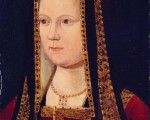
On this day in Tudor history, 11th February 1466, Elizabeth of York was born at Westminster Palace.
She was the daughter of a king, the sister of the Princes in the Tower, the wife of Henry VII, the mother of Henry VIII, and the grandmother of Edward VI, Mary I, Elizabeth I and James V. Her bloodline shaped the future of England, but she’s often overshadowed by the powerful men and women she was related to.
But Elizabeth was no passive figure. She was a key part of dynastic politics, and her marriage helped end the Wars of the Roses. Today, I’m exploring her remarkable life, her role in uniting the warring houses of Lancaster and York, and why she truly deserves to be remembered as the Queen of Hearts.
[Read More...]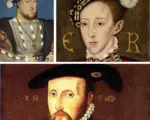
Henry VIII, one of England’s most famous monarchs, died on 28th January 1547 at the age of 55. His death, however, was not announced to the public immediately.
Why?
Well, the delay allowed his closest advisors and executors to figure out their next steps and secure their positions in this sudden transition of power.
Henry’s death was formally announced three days later, on this day in Tudor history, 31st January 1547, by Thomas Wriothesley, his Lord Chancellor. Chronicler and Windsor Herald Charles Wriothesley recorded the momentous occasion, describing how the proclamation was made in Westminster Hall by Garter King of Arms and other heralds, declaring Edward VI as King of England, France, and Ireland, Supreme Head of the Church, and Defender of the Faith.
[Read More...]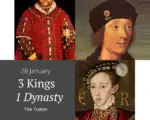
Today is a date packed with significance in Tudor history – it’s Henry VII’s birthday, the anniversary of the death of Henry VIII, and the anniversary of the accession of Edward VI.
Let’s take a closer look at how these three monumental events shaped the Tudor dynasty.
First, let’s go back to 28th January 1457, when Henry Tudor was born at Pembroke Castle in Wales.
[Read More...]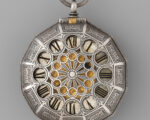
Today, I’m exploring the life of a remarkable yet forgotten craftsman.
On this day in Tudor history, 17th January 1587, Bartholomew Newsam died. He was buried in the church of St Mary-le-Strand, the parish in which he lived and worked. He was in his fifties at his death. His life spanned the reigns of five monarchs: Henry VIII, Edward VI, Lady Jane Grey, Mary I, and Elizabeth I—a time of immense change and innovation.
Newsam was more than just a craftsman—he was a trailblazer in English clockmaking, a skill that was incredibly specialised in Tudor times.
While most clocks were imported from Europe, Newsam stood out as one of the first English clockmakers to gain royal recognition.
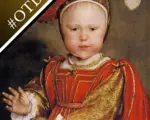
On this day in Tudor history, 15th October, the infant Prince Edward (Edward VI) was christened in the Chapel Royal at Hampton Court Palace (1537); and teacher and Welsh language poet Richard Gwyn (White) was hanged, drawn and quartered for his Catholic faith (1584)…
[Read More...]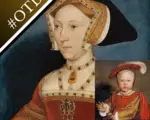
On this day in Tudor history, 12th October, Edward VI, son of Henry VIII and Jane Seymour, was born (1537); and MP and administrator Lewis Owen was murdered on a Welsh mountain pass as a result of his campaign against outlaws (1555)…
[Read More...]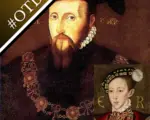
On this day in Tudor history, 5th October, Henry VIII’s daughter, two-year-old Princess Mary, became betrothed to the French dauphin; and Lord Protector Somerset ordered a gathering of men at Hampton Court Palace to protect him and the young King Edward VI…
[Read More...]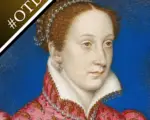
On this day in Tudor history, 11th September, Mary, Queen of Scots, began a rather eventful first royal progress in Scotland; and Barnaby Fitzpatrick, 2nd Baron of Upper Ossory, a good friend of Edward VI, died in Dublin…
[Read More...]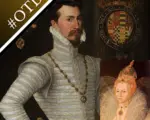
On this day in Tudor history, 28th August, Edward VI’s half-sister, Mary, was ordered to stop celebrating the Catholic mass, and an ailing Robert Dudley, Earl of Leicester, wrote his final letter to his queen and childhood friend, Elizabeth I…
[Read More...]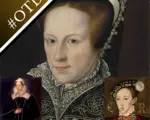
On this day in Tudor history, 19th August, Edward VI’s half-sister, Mary, wrote to him regarding him forbidding her to celebrate the Mass, and Mary, Queen of Scots, returned to Scotland from France to rule as its queen…
[Read More...]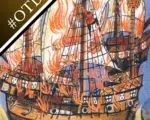
On this day in Tudor history, 10th August, the English fleet’s flagship, the Mary Rose, saw battle for the first time in the Battle of Saint-Mathieu; the friars observant were expelled from their houses; Mary I held a requiem mass for Edward VI; and seven men died of drowning at London Bridge…
[Read More...]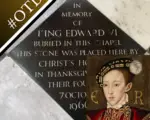
On this day in Tudor history, Margaret Tudor married James IV of Scotland at Holyroodhouse; Edward VI was buried at Westminster Abbey in a Protestant service; and Elizabeth I accepted the Earl of Leicester’s invitation to visit the troops at Tilbury Fort…
[Read More...]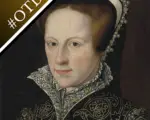
On this day in Tudor history, 7th July, Henry VIII’s eldest daughter, Mary, heard of her half-brother Edward VI’s death; Henry Peckham and John Danyell were hanged, drawn and quartered for their involvement in the Dudley Conspiracy; and William Turner, “father of English botany and of ornithology”, died…
[Read More...]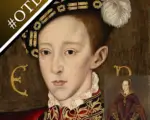
On this day in Tudor history, 6th July, Henry III’s former Lord Chancellor, Sir Thomas More, was executed for high treason; King Edward VI died, leaving the throne to Lady Jane Grey; and Margaret Clement, adopted daughter of Sir Thomas More, died in Mechelen…
[Read More...]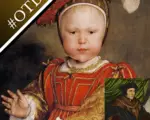
On this day in Tudor history, 1st July, Sir Thomas More was tried and found guilty of treason; Parliament declared both of Henry VIII’s daughters illegitimate; and the Treaties of Greenwich between England and Scotland were signed, and a marriage agreed between Prince Edward (Edward VI) and Mary, Queen of Scots…
[Read More...]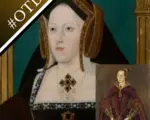
On this day in Tudor history, 21st June, Henry VIII travelled from Greenwich to the Tower of London; Catherine of Aragon gave an impassioned speech at the Legatine Court; letters patent were issued stating that Edward VI’s heir was Lady Jane Grey…
[Read More...]
On this day in Tudor history, 4th June, Jane Seymour was proclaimed queen at Greenwich; Robert Dudley married Amy Robsart at Sheen with Edward VI in attendance; and the spire of St Paul’s Cathedral was struck by lightning…
[Read More...]
I’ve just opened registration for my forthcoming online event “The Men Behind the Throne: Tudor Statesmen”! There’s an early bird discount until 31 May and our very first zoom call discussion, which is on Thomas Cromwell, is this Friday, 17th May!
In my interactive and completely online 11-day event, which starts properly on 30th June, I’ll be joined by historians Dr Joanne Paul, Caroline Angus, Melita Thomas, Phil Roberts and Dr Hannah Coates. We’ll be delving into the captivating lives of the Tudor statesmen who shaped England’s history alongside iconic rulers like Henry VII, Henry VIII, Edward VI, Mary I, and Elizabeth I.
Through video talks and zoom Q&A sessions with speakers – where you’ll be video chatting with the historian! – you’ll gain a fresh understanding of the roles and contributions of prominent Tudor statesmen, and insights into the political landscape of Tudor England, including court intrigues, power struggles, and the dynamics between monarchs and their advisors.
[Read More...]